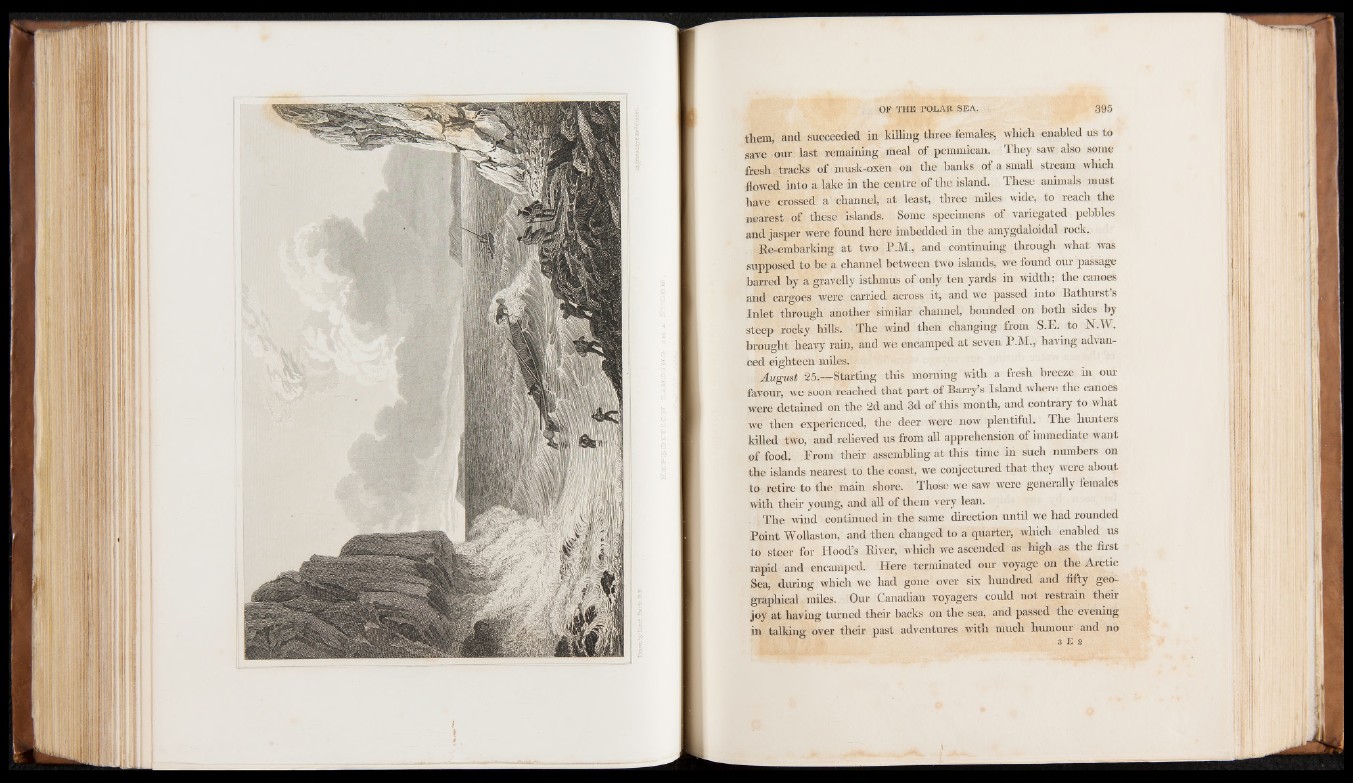
them, and succeeded in killing three females, which enabled us to
save our last remaining meal of pemmiean. They saw also some
fresh tracks of musk-oxen on the banks of a small stream which
flowed into a lake in the centre of the island. These animals must
have crossed a channel, at least, three miles wide, to reach the
nearest of these islands. Some specimens of variegated pebbles
and jasper were found here imbedded in the amygdaloidal rock.
Re-embarking at two P.M., and continuing through what was
supposed to be a channel between two islands, we found our passage
barred by a gravelly isthmus of only ten yards in width; the canoes
and cargoes were carried across it, and we passed into Bathurst’s
Inlet through another similar channel, bounded on both sides by
steep rocky hills. The wind then changing from S.E. to N.W.
brought heavy rain, and we encamped at seven P.M., having advanced
eighteen miles..
August 25.—Starting this morning with a fresh breeze in our
favour, we soon reached that part of Barry’s Island where the canoes
were detained on the 2d and 3d of this month, and contrary to what
we then experienced, the deer were now plentiful. The hunters
lHllprl two, and relieved us from all apprehension of immediate want
of food. From their assembling at this time in such numbers on
the islands nearest to the coast, we conjectured that they were about
to retire to the main shore. Those we saw were generally females
with their young, and all of them very lean.
The wind continued in the same direction until we had rounded
Point Wollaston, and then changed to a quarter, which enabled us
to steer for Hood’s Biver, which we ascended as high as the first
rapid and encamped. Here terminated our voyage on the Arctic
Sea, during which we had gone over six hundred and fifty geographical
miles. Our Canadian voyagers could not restrain their
joy at having turned then backs on the sea, and passed the evening
in talking over their past adventures with much humour and no